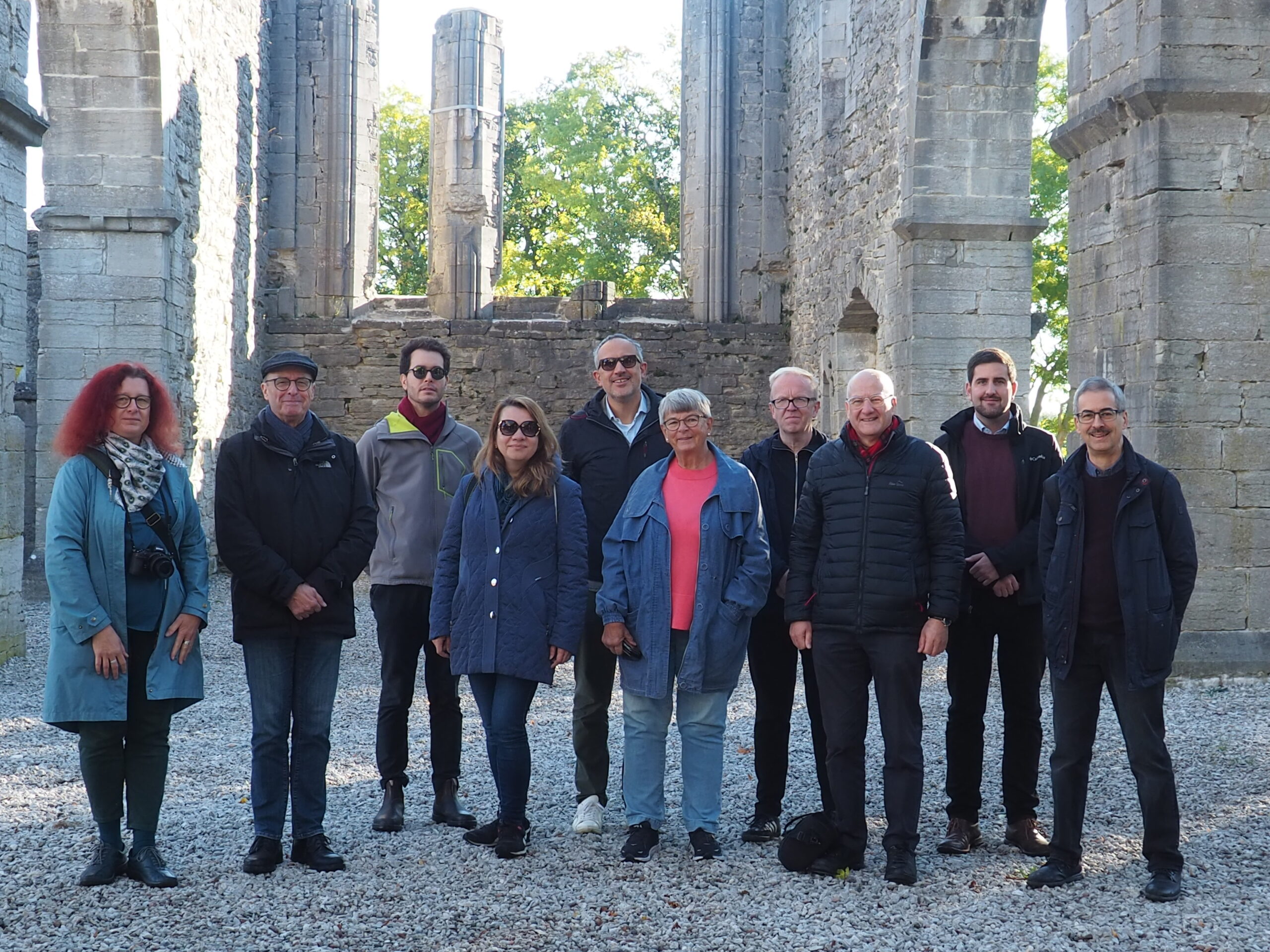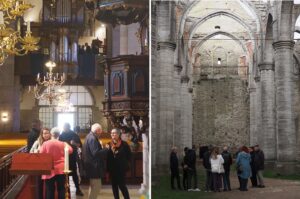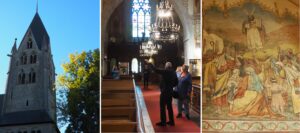The last week of September was marked by a Face to Face Members Meeting in Gotland, Sweden, organised by FRH in collaboration with the Church of Sweden through the Diocese of Lund (with heritage officer and member of FRH Heikki Ranta) and Visby Cathedral Congregation (Diocese of Visby). The face-to-face meeting included presentations by local organisations as well as two fascinating study visits to the religious heritage landmarks in Visby (the capital) and to the island’s medieval churches.
These meetings, organised on a regular basis exclusively for FRH members, enhance the role of our network as a platform where members meet, network and exchange ideas, information and practices.

The first day of our meeting began with an introduction to the International League of Cities THE HANSE by Inger Harlevi, who is the vice president of the organisation as well as the route manager of The Hansa (Cultural Route of the Council of Europe). The largest medieval merchants’ organisation played a key role in the trade relations of the island which became one of the main centres of the Hanseatic League. Harlevi also gave a presentation explaining the requirements to be certified as a Cultural Route by the Council of Europe, and the ongoing evaluation process they are subject to.
Our programme continued with a short concert of organ music at St Mary’s Cathedral in Visby. After listening to a selection of musical compositions, Anna Lundgren, deacon of Visby parish, encouraged us to wander around and admire the numerous artefacts in this 13th-century Cathedral as well as its six organs.
Back in the 13th and 14th centuries, many monasteries flourished within the city walls. Many of them are now imposing remains that have been transformed into cultural venues or are simply open to satisfy the curiosity of tourists, historians and heritage scholars. On our guided tour of Visby, our members had the chance to walk among the ruins of the churches of St Peter and St Han, St Catherine, St Nicholas, the Holy Spirit and St Clements.

The afternoon presentations focused on two pressing matters for religious heritage: energy efficiency and sustainability. Tor Broström, Professor of the Department of Art History at the Uppsala University (Campus Gotland) explained how the island monitors the indoor climate of its churches using an app. Broström concluded his presentation with an overview of the work carried out by the Sustainable Heritage Research Forum (SuHRF), an interdisciplinary centre to foster debate on the sustainability of cultural heritage, especially in connection to issues such as regional development and climate change.
Thursday’s programme ended with the presentation of Henrik Widmark, university lecturer of the Department of Arts and Sciences at Uppsala University and also member of FRH, on the work of the Sacred Heritage Research Forum (Forum för forskning om de kyrkliga kulturarven, FFKK).
The island of 100 churches
On the second day of our meeting, we took our members outside the city walls to visit some of the 92 medieval churches in Gotland. These included the Roma Monastery ruins, Dalhem Church, Källunge Church , Bro Church, Fröjel Church and Mästerby Church.
We were accompanied throughout the tour by Benjamin Ulbricht, diocesan assistant professor for pilgrim affairs at the Diocese of Visby. Ulbricht received us at the parish house of Dalhem where he explained how the Diocese of Visby is working to promote Gotland’s churches and showed us the app “100 kyrkornas ö” (The island of 100 churches), an interactive guide to the island’s unique religious heritage.
We would like to thank all the members who joined us in Gotland for making this a fruitful and dynamic meeting and the Diocese of Visby for hosting us. Please note that the Face to Face Meetings are organised exclusively for FRH Members.
Have a look at the PHOTO ALBUM

Please note that the Face to Face Meetings are organised exclusively for FRH Members.





Follow us: